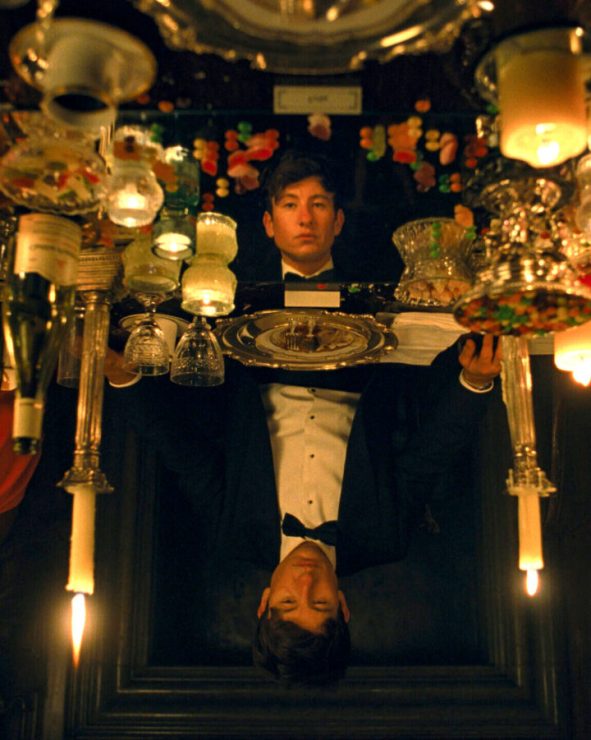This comedy-thriller is an artistic, twisted story of obsession

Photo via Amazon Studios.
Saltburn, starring Barry Keoghan and Jacob Elordi, tells the tale of a quirky aristocratic family and their summer guest at the titular estate. As the summer progresses and relationships grow, infatuation turns into something much worse and the family’ lives are shattered.
If I were to describe Saltburn’s aesthetics in one word, it would be gothic. From the orchestral and choral music to the architecture of the manor, every piece of imagery and sound in the film echoes gothic elements of horror, gloom, and mystery. Even the old-timey font used in the opening sequence perfectly encapsulates this aesthetic vision, which I was surprised to find played well with the late-aughts fashion and cultural elements.
I interpreted the use of a maze as a character of its own as a brilliant homage to Stanley Kubrik’s The Shining. I also saw the maze as a symbol of the customs of the English aristocracy, which are criticized throughout the movie and presented as strange and superfluous.
The soundtrack for this film was delightful and its variety added to the depth of the story. Other than the brilliant final scene featuring “Murder On The Dancefloor,” my favourite use of music was the fun, carefree summer montage while “Time to Pretend” by MGMT played. It certainly helped to centre the audience firmly in 2007, while also creating a whimsical and aspirational feeling that only MGMT can provide.
The original orchestral score, composed by Anthony Willis, added to the gothic nature of the film and provided a grand aura of sophistication that complimented the story’s unravelling sanity. This compelling sound contrasted well with the pop sprinkled throughout, assisting in the film’s successful pairing of thrill with humour.
This film works very well as a horror-comedy. I thoroughly enjoyed the cold, dry British humour employed at some of the darkest moments. Rosamund Pike’s character is the epitome of aristocratic satirization, and she plays this role perfectly. I loved her chemistry with the main character Oliver Quick (Barry Keogh).
Felix Catton’s (Jacob Elordi) charismatic, carefree, and classic college boy persona sat nicely with the eccentricities of the rest of the cast. He offers a sense of reality that makes the story more grounded and believable, heightening the stakes for the audience when disaster strikes.
I did not care for the decision to make the film’s aspect ratio nearly square (4:3, to be exact). Saltburn’s cinematographer Linus Sandgren explained in an interview that this was to make our view of the aristocratic family’s life feel “voyeuristic” and “painterly,” but I simply felt distracted by the large, black rectangles at either side of Capital 6’s massive screen.
After the biggest plot twist of the story, while there is still plenty of movie left, one might argue that the ending becomes predictable. Similarly to Director Emerald Fennell’s first full-length film, Promising Young Woman, there is a messy and dramatic plot shift that changes the main message. After this shift, it is somewhat clear how the plot will tie itself together. As a typical audience member myself, I did not feel the predictability of the ending enough to be bothered or feel disappointed.
The uncomfortable and thrilling ending of Saltburn felt successful to me because of the way that we are invited to empathize so heavily with Oliver. In a guilty sense, the audience can still feel for the story’s hero-turned-villain.
Saltburn was an exquisite escape into a world completely foreign to most of us. I would recommend it to anyone looking for a film full of twists, immersive imagery, dark humour, and opportunities to gasp.








